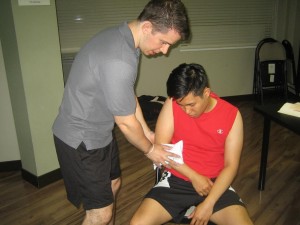Prickly heat rash or miliaria most often develops on infants whose sweat glands are easily blocked but can also occur in older children and even adults. Take note that prickly heat rash develops once the sweat glands that are responsible for cooling the skin rupture from being clogged up and the sweat seeps into the tissues, resulting to rashes.
The two forms of miliaria most often occur frequently – miliaria crystallina and miliaria rubra. When it comes to miliaria crystallina, it leads to the production of small-sized blisters that do not cause the reddening of the skin. As for miliaria rubra, it causes red-colored, itchy bumps. There are simple remedies that usually treat prickly heat rashes effectively without requiring medical care but in some cases, a secondary infection or severe discomfort would require medical attention as soon as possible.
Cooling measures

By cooling the affected region, it can effectively manage prickly heat rashes. Due to the friction from constricted clothing, it can worsen the symptoms. Loose-fitting clothes that are breathable and do not retain heat can help minimize the rashes. Cotton or other breathable fabrics must be worn by the individual.
The skin folds, chest, upper back and forehead are areas prone to prickly heat rashes. Always remember that special care must be taken to avoid constricted clothing and non-breathable fabrics.
Other cooling measures include a lukewarm bath for infants while older children and adults with severe itchiness can take a bath that includes oatmeal or baking soda. A cold compress on the affected area for older children and adults as well as staying inside an air-conditioned room can help minimize the discomfort and promote the healing of the lesions. You can learn more about these relief measures by simply enrolling in one of the courses on first aid today.
Applications on the skin
Applying antiperspirants and powdering the skin can help dry the skin surface and help heal the prickly heat rash. Lotions such as calamine can help reduce the itchiness. Even skin pads that contain salicylic acid can help unblock the pores.
Antihistamines
Antihistamines that are taken orally such as diphenhydramine can help minimize the itchy, prickling sensations of the prickly heat rashes as well as cause drowsiness so that the individual can rest. Antihistamines for children older than 12 months are available in liquid form while children younger than 12 months old must not be given unless instructed by a doctor.
Prescription medications
Prescription medications can help improve the prickly heat rashes or minimize the discomfort in some cases. The application of corticosteroid creams on the affected areas can help reduce the inflammation in the affected areas. In case a secondary infection develops from open blisters due to scratching, antibiotic creams can help prevent the development of deeper skin infections.
